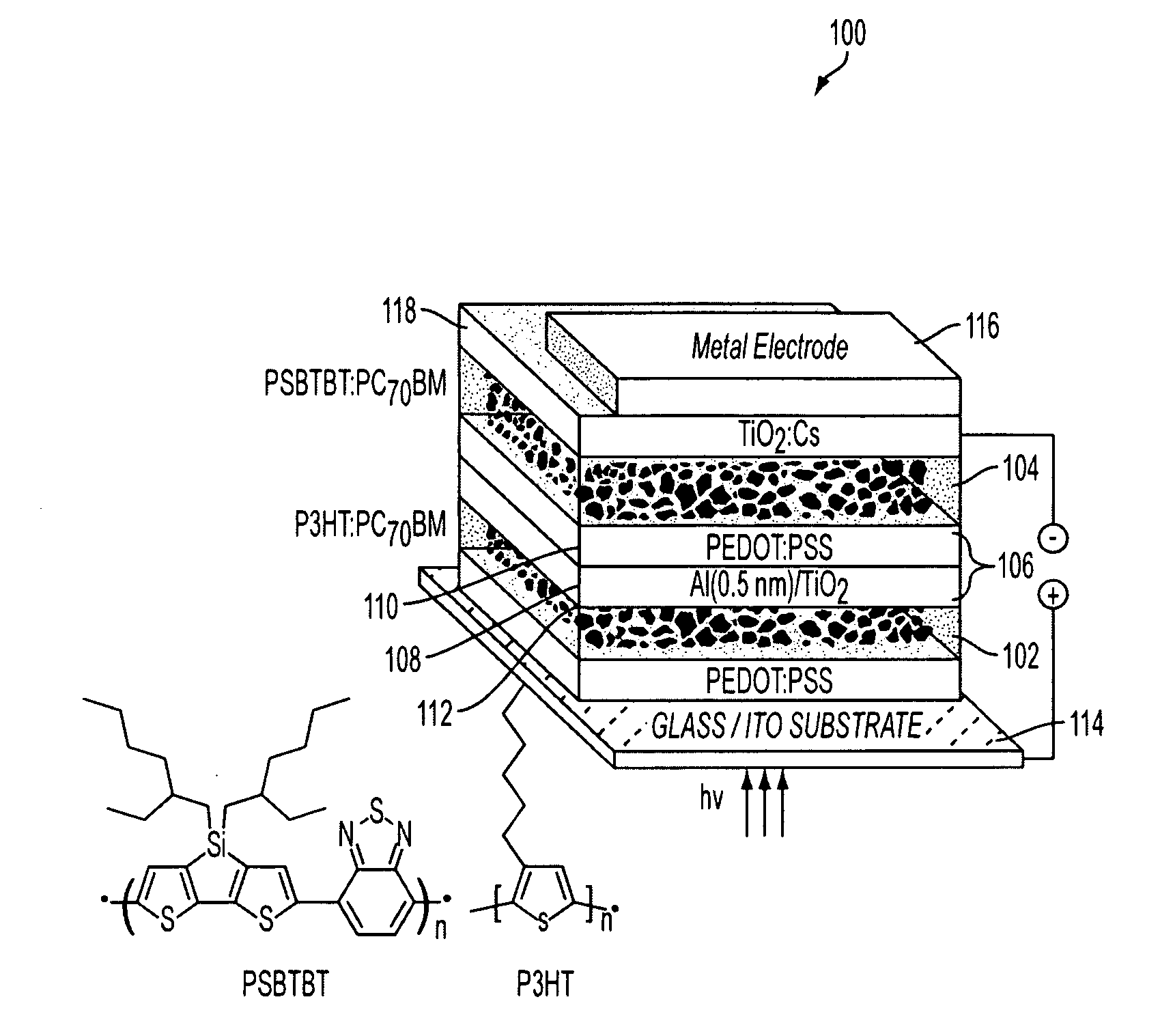Highly efficient tandem polymer photovoltaic cells
a tandem polymer and photovoltaic cell technology, applied in the field of photovoltaic cells, can solve the problems of inability to exceed the product maximum total power generated by a pv device, difficult and expensive production, and large surface area of efficient crystalline-based devices,
- Summary
- Abstract
- Description
- Claims
- Application Information
AI Technical Summary
Problems solved by technology
Method used
Image
Examples
examples
[0033]Several criteria that should be considered in order to achieve highly efficient tandem polymer photovoltaic devices include minimal absorption overlap between the two sub-cells, a compatible fabrication process for constructing the layer-by-layer structure, and an efficient interlayer (metal-semiconductor layer) for connecting the sub-cells. The following examples can facilitate an understanding of the physics of an efficient interlayer and the role of n-type TiO2 and p-type poly(3,4-ethylenedioxythiophene) poly(styrenesulfonate) (PEDOT:PSS) materials. A TiO2 sublayer was synthesized via a non-hydrolytic sol-gel process, which offers a simple way to control the nanocrystal size and to fabricate the film without thermal-annealing and hydrolysis treatment in air (M.-H. Park, J.-H. Li, A. Kumar, G. Li, Y. Yang, Adv. Funct. Mater. 2009, 19, 1241). On the TiO2 surface we provided a PEDOT:PSS (VP AI 4083 from H. C. Stark, PEDOT4083) film (conductivity of 10−3 Scm−1) that acts as an ...
PUM
| Property | Measurement | Unit |
|---|---|---|
| Thickness | aaaaa | aaaaa |
| Transparency | aaaaa | aaaaa |
| Semiconductor properties | aaaaa | aaaaa |
Abstract
Description
Claims
Application Information
 Login to View More
Login to View More - R&D
- Intellectual Property
- Life Sciences
- Materials
- Tech Scout
- Unparalleled Data Quality
- Higher Quality Content
- 60% Fewer Hallucinations
Browse by: Latest US Patents, China's latest patents, Technical Efficacy Thesaurus, Application Domain, Technology Topic, Popular Technical Reports.
© 2025 PatSnap. All rights reserved.Legal|Privacy policy|Modern Slavery Act Transparency Statement|Sitemap|About US| Contact US: help@patsnap.com



